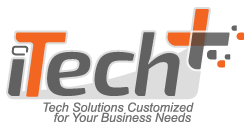
Tax Office Management-Tax offices are responsible for collecting and managing taxes for individuals and businesses. As such, they must ensure that their processes are efficient and streamlined in order to maximize their effectiveness. Fortunately, information technology (IT) can help tax offices streamline their processes and increase efficiency.
One way IT can help tax offices is by automating certain processes. For example, IT can be used to automate the filing of tax returns, which can save time and reduce errors. Additionally, IT can be used to automate the calculation of taxes, which can help to ensure accuracy and reduce the amount of time spent on manual calculations.
IT can also be used to improve communication between tax offices and their clients. For example, IT can be used to create online portals where clients can submit their tax returns and access their account information. This can help to reduce the amount of time spent on manual communication and make it easier for clients to access their information.
Finally, IT can be used to improve the security of tax offices. For example, IT can be used to create secure databases where tax information is stored. This can help to protect sensitive information from unauthorized access and reduce the risk of data breaches.
Overall, IT can be a powerful tool for tax offices to streamline their processes and increase efficiency. By automating certain processes, improving communication with clients, and improving security, IT can help tax offices to maximize their effectiveness and provide better service to their clients.
Automation is becoming increasingly important in the management of tax offices. Automation can help tax offices to streamline their processes, reduce costs, and improve accuracy. This article will explore the benefits of automation in tax office management.
Exploring the Benefits of Automation in Tax Office Management
One of the primary benefits of automation in tax office management is improved accuracy. It can help to reduce errors in data entry and calculations, which can lead to more accurate tax returns. This can also help to ensure that all relevant information is included in the tax return, which can help to reduce the risk of errors.
Also automation can also help to reduce costs. The big benefit is that it can help to reduce the amount of time spent on manual data entry and calculations, which can help to reduce labor costs. It helps to reduce the amount of paper used in the tax office, which can help to reduce printing costs.
Automating can also help to streamline processes in the tax office. Automation can help to reduce the amount of time spent on manual tasks, which can help to speed up the processing of tax returns. Automation can also help to reduce the amount of paperwork that needs to be completed, which can help to reduce the amount of time spent on administrative tasks.
Finally, automation can help to improve customer service in the tax office. Automation can help to reduce the amount of time spent on manual tasks, which can help to free up staff to focus on providing better customer service. Automation can also help to reduce the amount of paperwork that needs to be completed, which can help to reduce the amount of time spent on customer service tasks.
In conclusion, automation can provide a number of benefits to tax office management. Automation can help to improve accuracy, reduce costs, streamline processes, and improve customer service. Automation can help to make tax office management more efficient and effective.
Leveraging Cloud Computing to Unlock Innovation
Cloud computing has revolutionized the way businesses manage their operations, and the tax office is no exception. By leveraging cloud computing, tax offices can unlock a wealth of innovation. That can help them streamline their processes, reduce costs, and improve customer service.
Cloud computing offers a number of advantages for tax offices. First, it allows for the storage and sharing of data in a secure, cost-effective manner. This eliminates the need for expensive hardware and software, as well as the associated maintenance costs. Additionally, cloud computing allows for the rapid deployment of new applications and services, enabling tax offices to quickly respond to changing customer needs.
Cloud computing also enables tax offices to access powerful analytics tools. These tools can help them better understand their customers and their needs. This can help them identify areas of improvement and develop strategies to better serve their customers. Additionally, cloud computing can help tax offices automate their processes, reducing the amount of time and resources spent on manual tasks.
Finally, cloud computing can help tax offices improve their customer service. By leveraging cloud-based customer relationship management (CRM) tools, tax offices can better track customer interactions and provide more personalized service. This can help them build stronger relationships with their customers and increase customer satisfaction.
In short, cloud computing can help tax offices unlock a wealth of innovation. That can help them streamline their processes, reduce costs, and improve customer service. By leveraging the power of the cloud, tax offices can become more efficient and better serve their customers.

Tax Office Management-Tax offices are responsible for collecting and managing taxes for individuals and businesses. As such, they must ensure that their processes are efficient and streamlined in order to maximize their effectiveness. Fortunately, information technology (IT) can help tax offices streamline their processes and increase efficiency.
One way IT can help tax offices is by automating certain processes. For example, IT can be used to automate the filing of tax returns, which can save time and reduce errors. Additionally, IT can be used to automate the calculation of taxes, which can help to ensure accuracy and reduce the amount of time spent on manual calculations.
IT can also be used to improve communication between tax offices and their clients. For example, IT can be used to create online portals where clients can submit their tax returns and access their account information. This can help to reduce the amount of time spent on manual communication and make it easier for clients to access their information.
Finally, IT can be used to improve the security of tax offices. For example, IT can be used to create secure databases where tax information is stored. This can help to protect sensitive information from unauthorized access and reduce the risk of data breaches.
Overall, IT can be a powerful tool for tax offices to streamline their processes and increase efficiency. By automating certain processes, improving communication with clients, and improving security, IT can help tax offices to maximize their effectiveness and provide better service to their clients.
Automation is becoming increasingly important in the management of tax offices. Automation can help tax offices to streamline their processes, reduce costs, and improve accuracy. This article will explore the benefits of automation in tax office management.
Exploring the Benefits of Automation in Tax Office Management
One of the primary benefits of automation in tax office management is improved accuracy. It can help to reduce errors in data entry and calculations, which can lead to more accurate tax returns. This can also help to ensure that all relevant information is included in the tax return, which can help to reduce the risk of errors.
Also automation can also help to reduce costs. The big benefit is that it can help to reduce the amount of time spent on manual data entry and calculations, which can help to reduce labor costs. It helps to reduce the amount of paper used in the tax office, which can help to reduce printing costs.
Automating can also help to streamline processes in the tax office. Automation can help to reduce the amount of time spent on manual tasks, which can help to speed up the processing of tax returns. Automation can also help to reduce the amount of paperwork that needs to be completed, which can help to reduce the amount of time spent on administrative tasks.
Finally, automation can help to improve customer service in the tax office. Automation can help to reduce the amount of time spent on manual tasks, which can help to free up staff to focus on providing better customer service. Automation can also help to reduce the amount of paperwork that needs to be completed, which can help to reduce the amount of time spent on customer service tasks.
In conclusion, automation can provide a number of benefits to tax office management. Automation can help to improve accuracy, reduce costs, streamline processes, and improve customer service. Automation can help to make tax office management more efficient and effective.
Leveraging Cloud Computing to Unlock Innovation
Cloud computing has revolutionized the way businesses manage their operations, and the tax office is no exception. By leveraging cloud computing, tax offices can unlock a wealth of innovation. That can help them streamline their processes, reduce costs, and improve customer service.
Cloud computing offers a number of advantages for tax offices. First, it allows for the storage and sharing of data in a secure, cost-effective manner. This eliminates the need for expensive hardware and software, as well as the associated maintenance costs. Additionally, cloud computing allows for the rapid deployment of new applications and services, enabling tax offices to quickly respond to changing customer needs.
Cloud computing also enables tax offices to access powerful analytics tools. These tools can help them better understand their customers and their needs. This can help them identify areas of improvement and develop strategies to better serve their customers. Additionally, cloud computing can help tax offices automate their processes, reducing the amount of time and resources spent on manual tasks.
Finally, cloud computing can help tax offices improve their customer service. By leveraging cloud-based customer relationship management (CRM) tools, tax offices can better track customer interactions and provide more personalized service. This can help them build stronger relationships with their customers and increase customer satisfaction.
In short, cloud computing can help tax offices unlock a wealth of innovation. That can help them streamline their processes, reduce costs, and improve customer service. By leveraging the power of the cloud, tax offices can become more efficient and better serve their customers.

Add a Comment